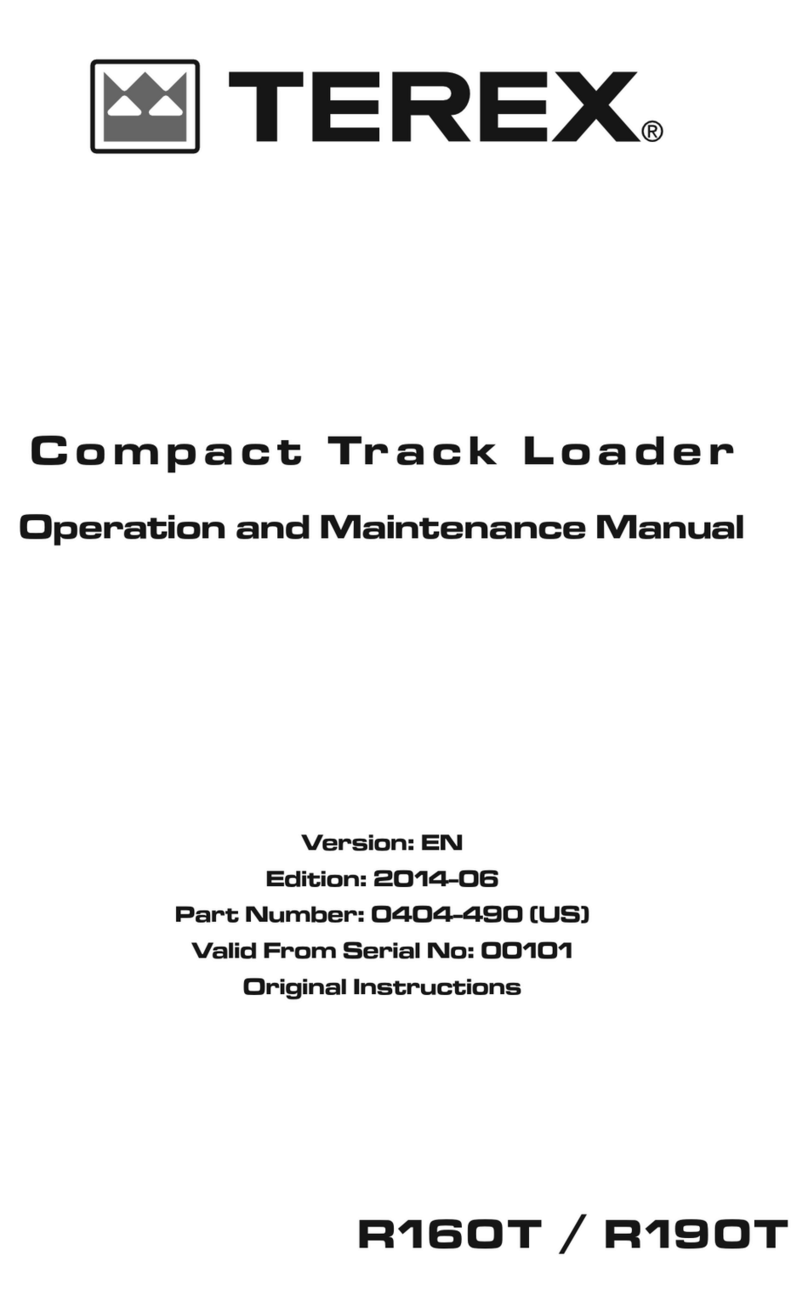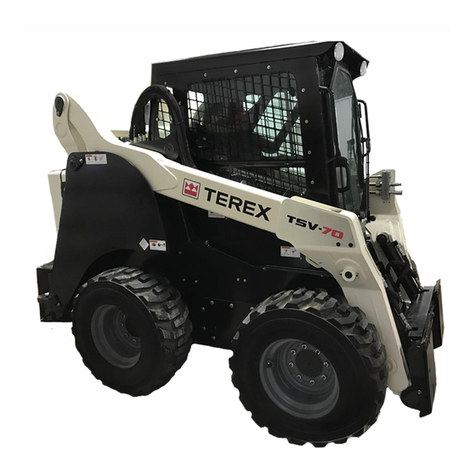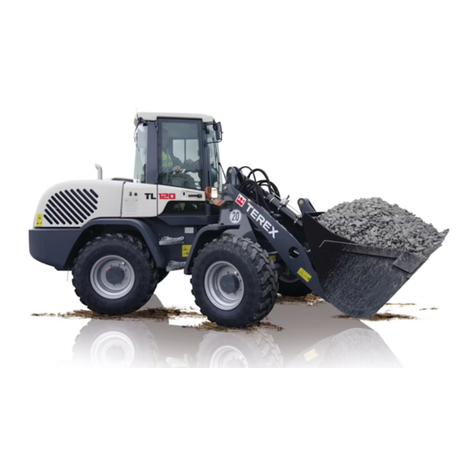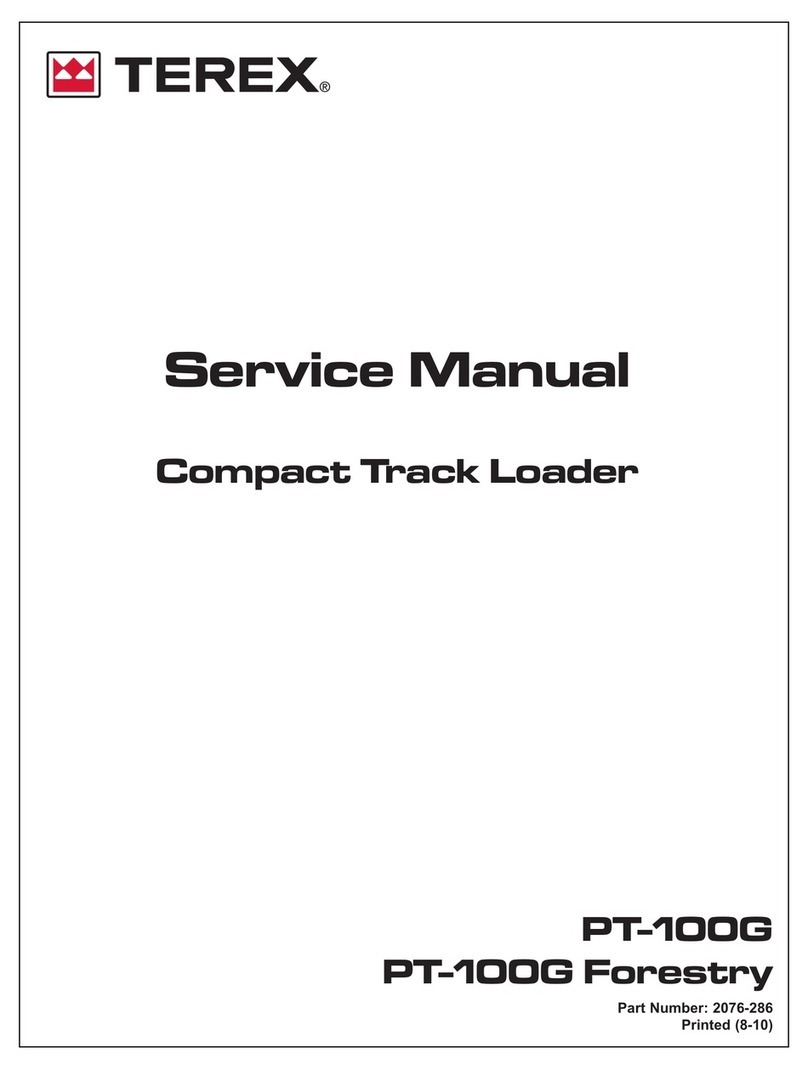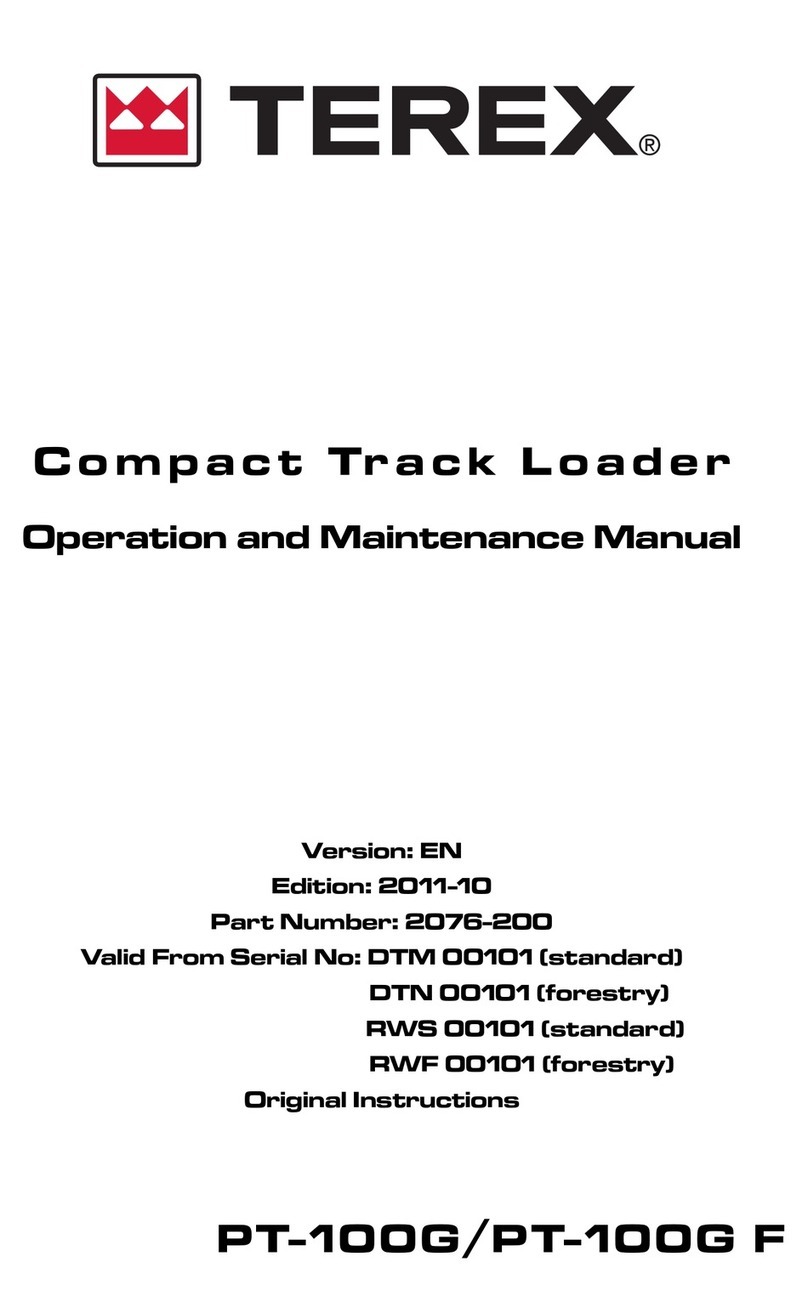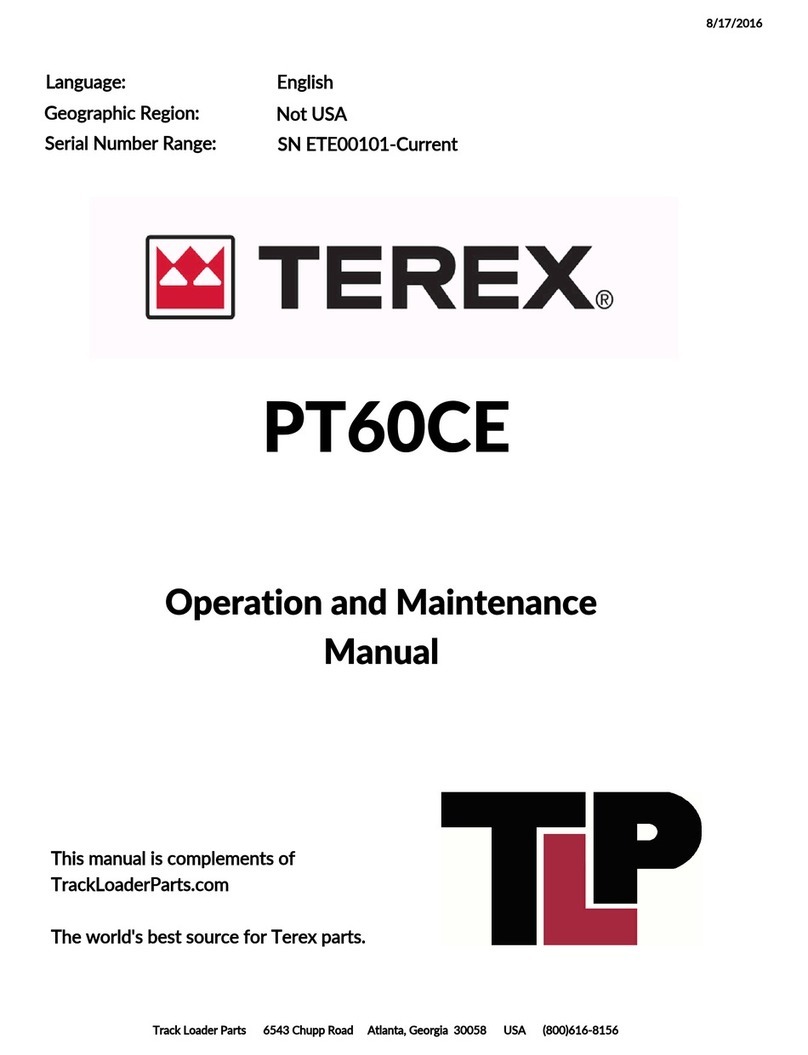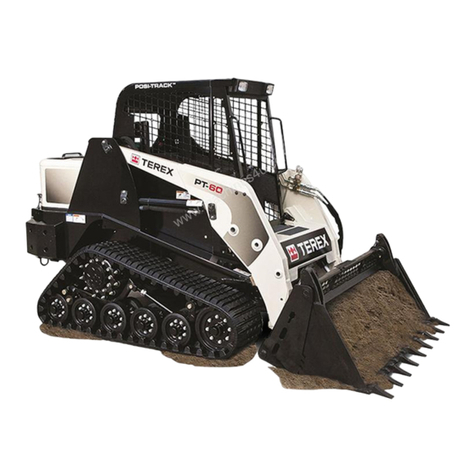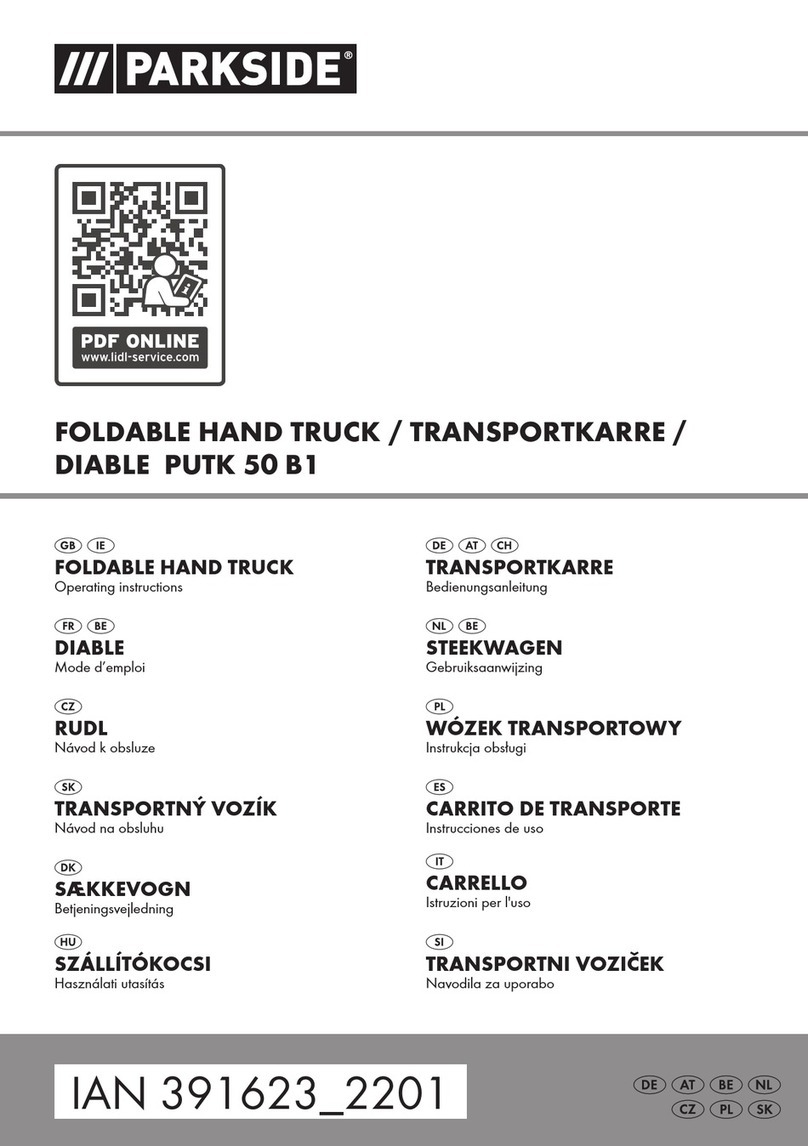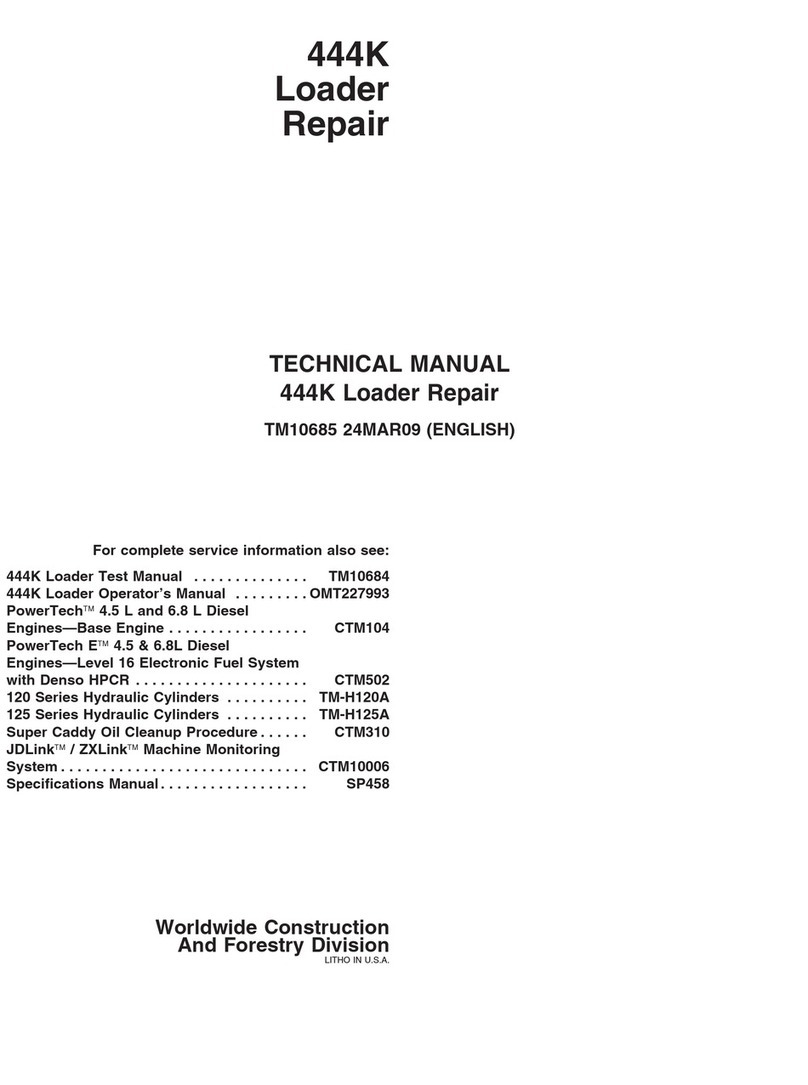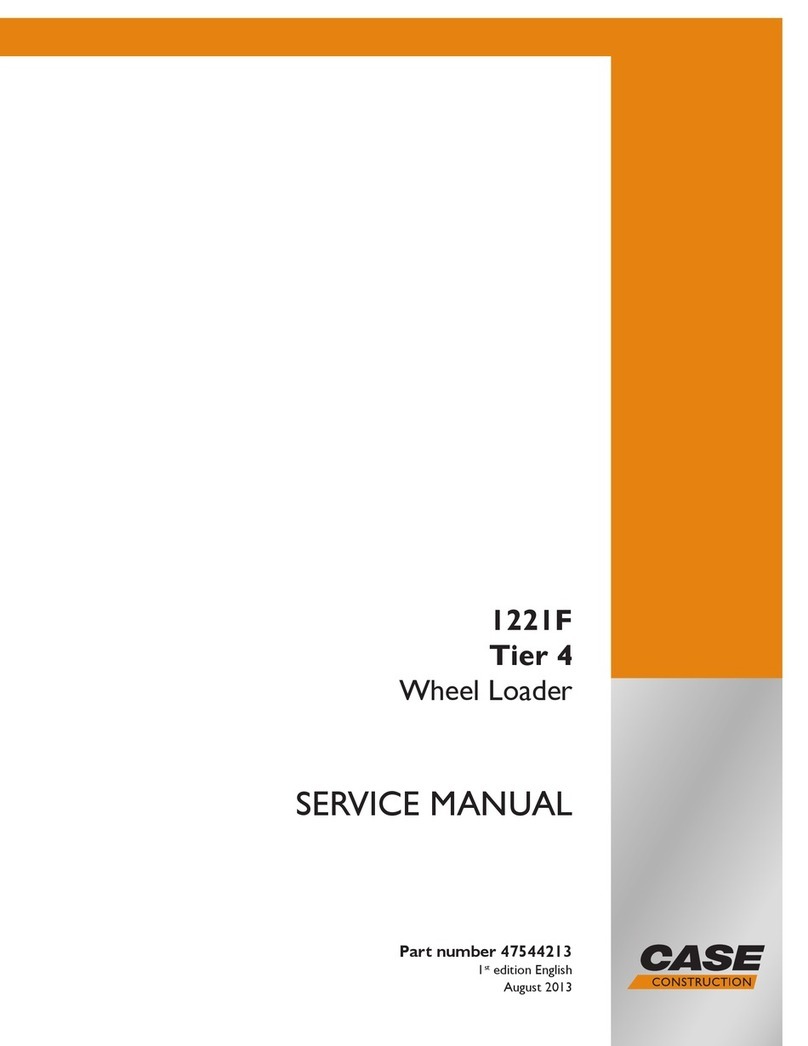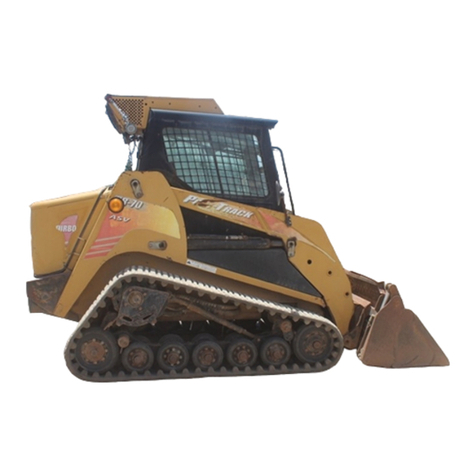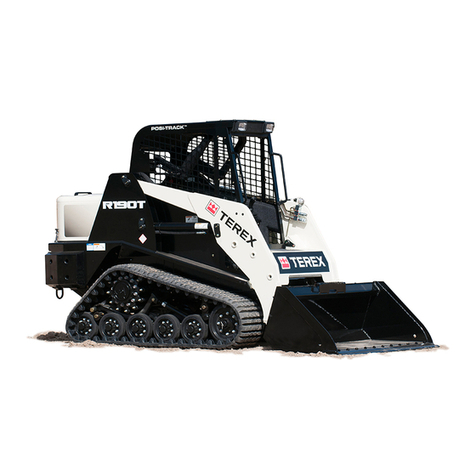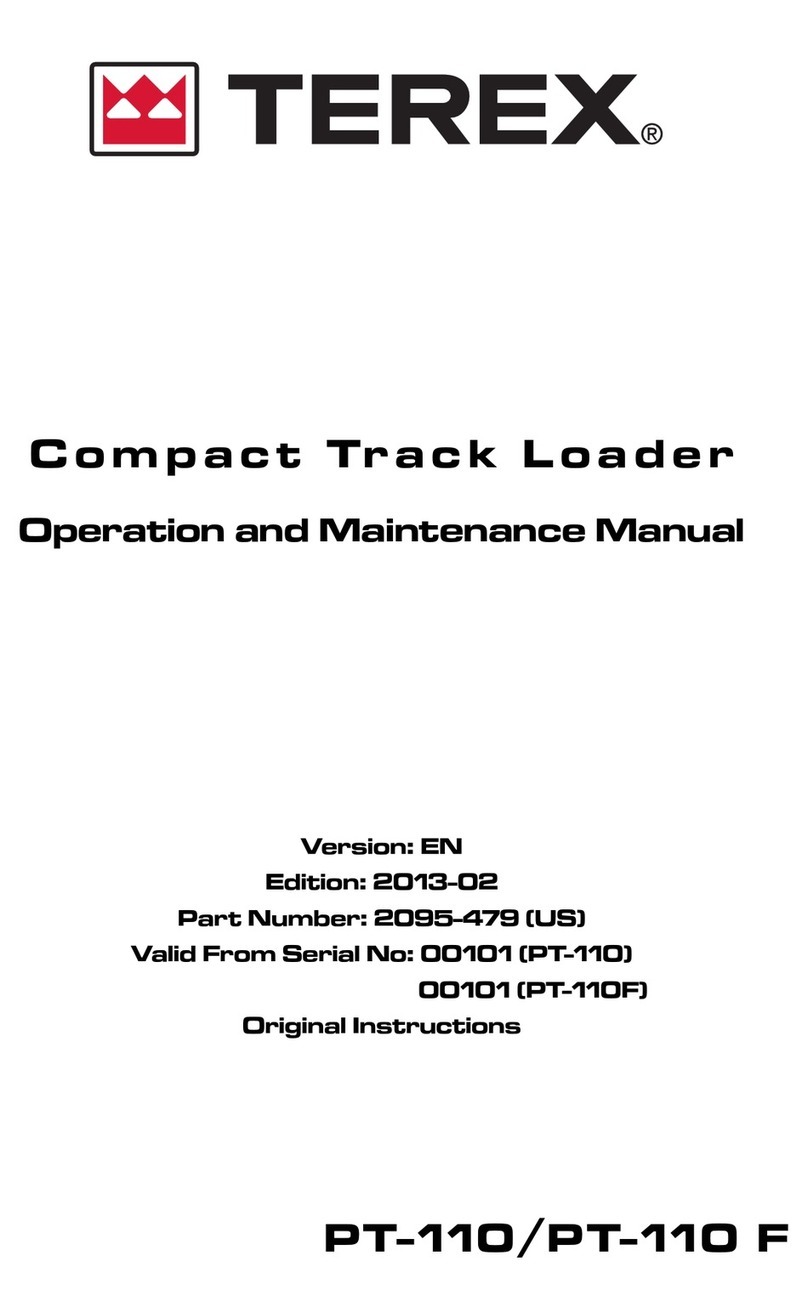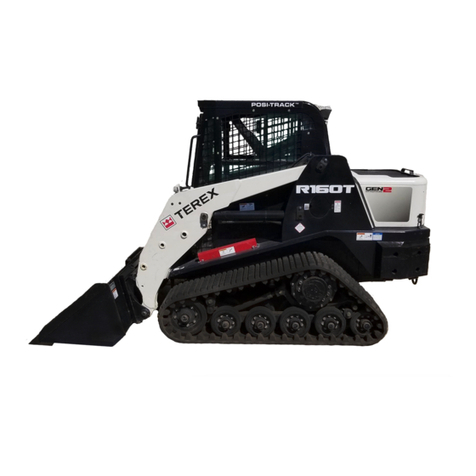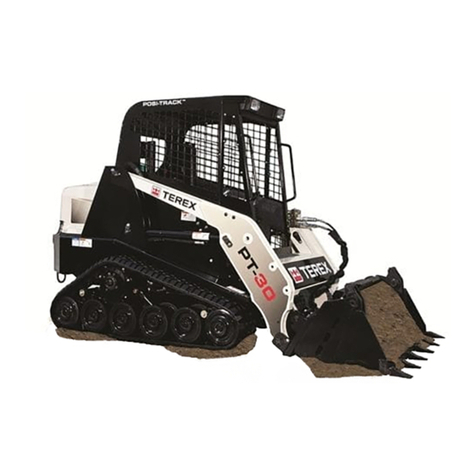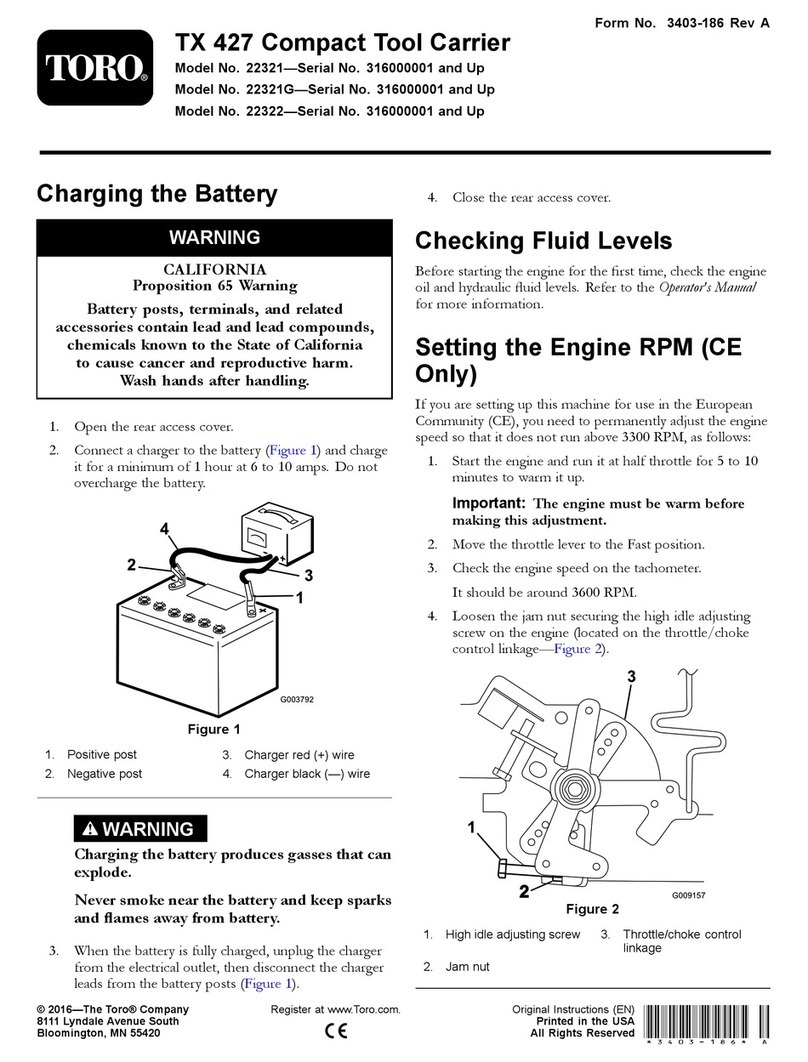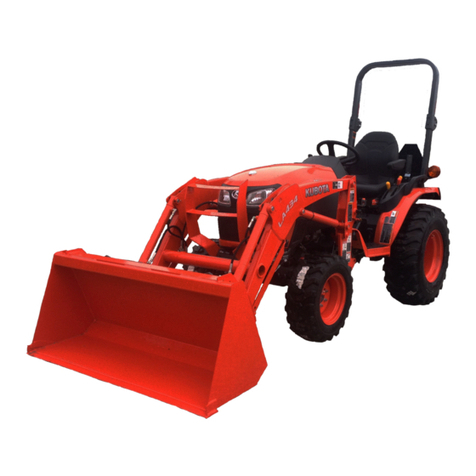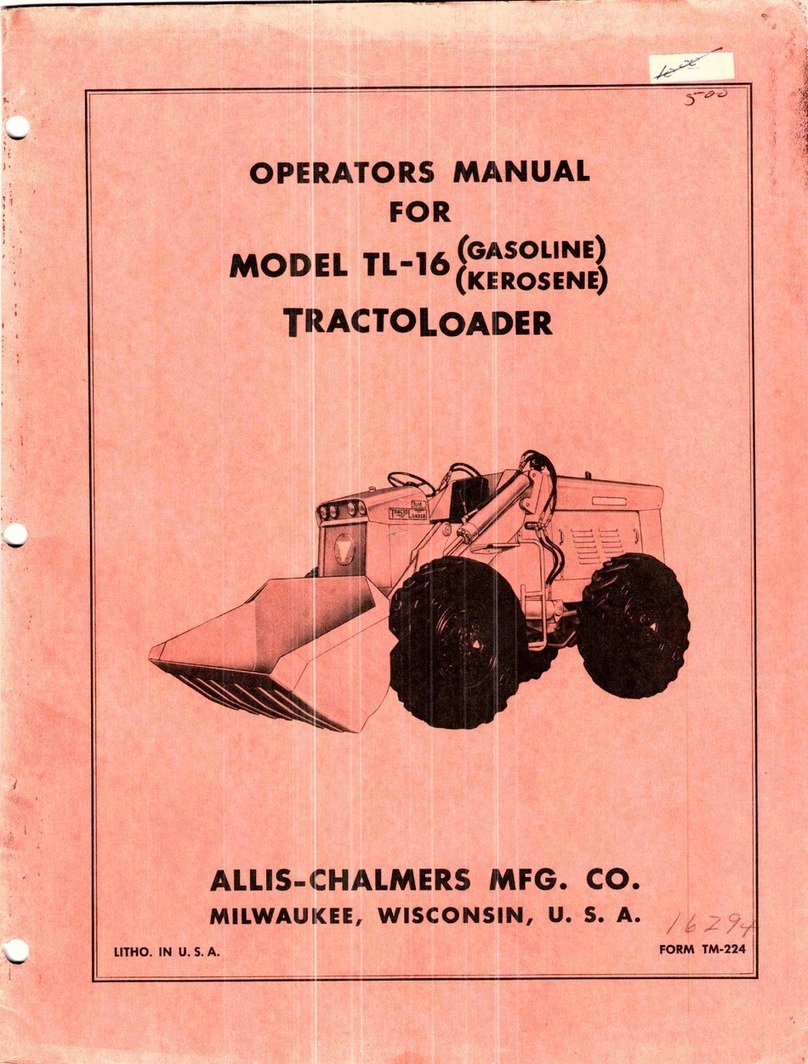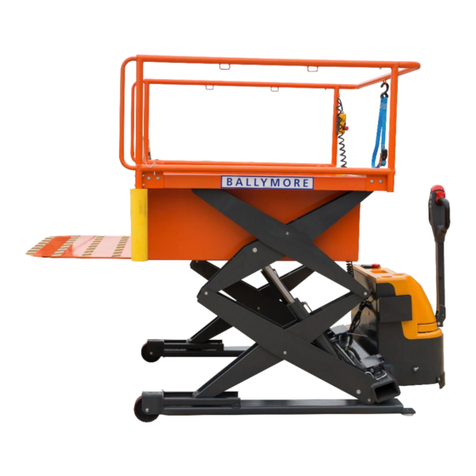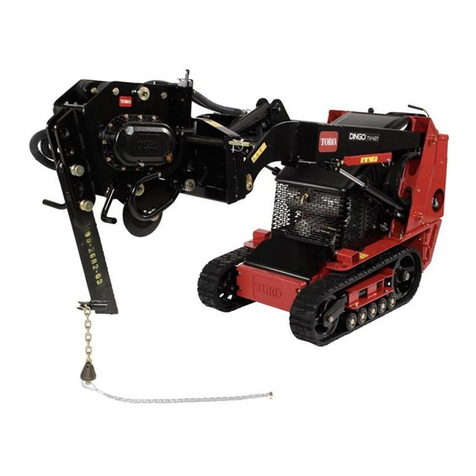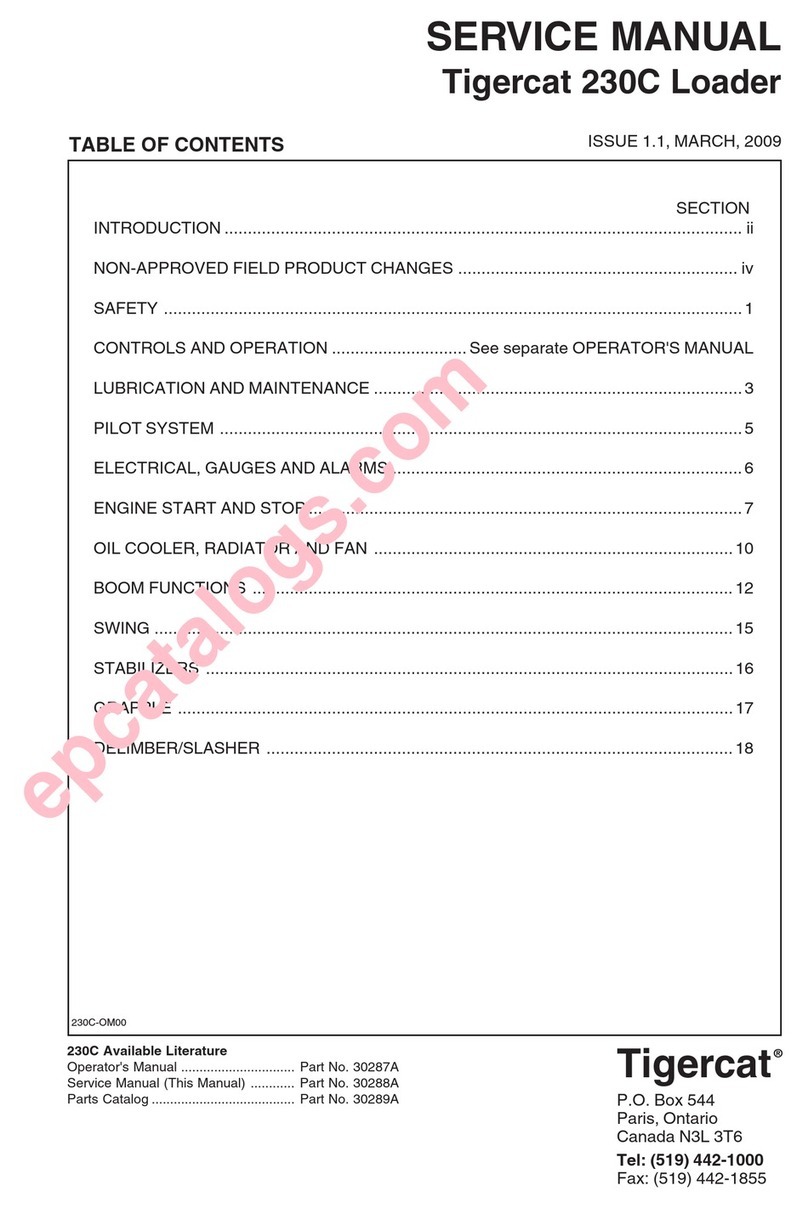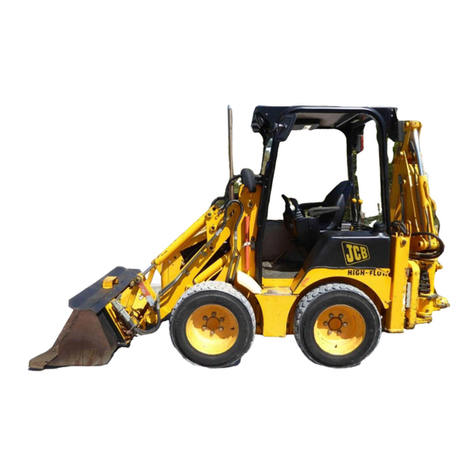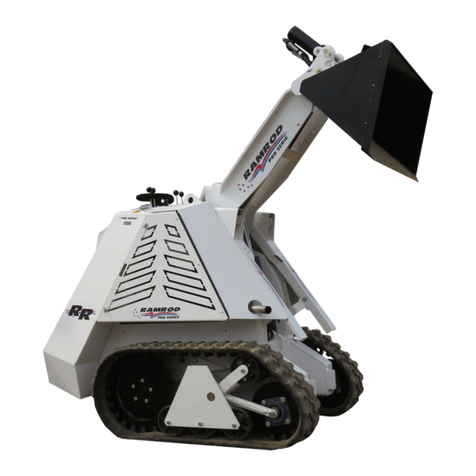
Description November 2008
rotation, boom extension/ retraction, attachment locking/
unlocking).
In the head there is a pressure relief valve set at 280
bar which, acting on the line of the “load sensing” signal,
limits the maximum pressure at the inlet of the main
valve through such 3-way compensator. On the main
inlet head of the main valve, there is also the pilot line
head which includes an inlet safety filter, a pressure
relief valve acting on the pilot line, and a safety solenoid
valve. The pilot head delivers oil at pressure to the 4
control modules of the main valves, such modules
operating the relevant main sliders in relation to the
command signal they receive from such joystick via the
control unit.
Module 1 of the main valve controls the telescopic
boom lifting cylinder (17). This cylinder has one single-
acting compensation valve (43) with safety function.
The control module of the second main valve element
is the electro-proportional type with electrical feed-back
and integrated electronics. The 0.5-lt. accumulator
prefilled at 50 bar (18) and located on the line of the
differential chamber of the lifting cylinder (17), allows
for damping the boom swings when the same boom is
moved down.
Module 2 of the main valve (16) controls the cylinder
operating the attachment holding plate of the telescopic
boom (19). This cylinder is equipped with a double-acting
compensation valve (41) with safety function. Paralleled
to this cylinder we find the fork levelling cylinder (20) (or
balancingcylinder)equippedwithaspecialdouble-acting
compensation valve (42). Inside this valve, the one-way
valves are installed in a reverse manner with respect
to the normal position to avoid the pressurisation of the
cylinder when the rotation command of the attachment
holding plate is operated. Again inside this valve, there
are other two one-way valves (44) set at 5 bar with
anti-cavitation function. These are used to deliver oil,
sucked from the low pressure line coming from the
drive pump (2), to the compensation circuit of the fork
levelling function, when such circuit cannot do it alone.
The control module of the second main valve element
is the electro-proportional type with electrical feed-back
and integrated electronics. On the two control lines of
the cylinder (19), and integral to module 2, there are two
pressure relief valves set at 290 bar which protect the
automatic levelling system of the forks when the boom
is moved up and down and in case of overload on the
attachment holding plate (ex. use of the bucket).
Module 3 of the main valve controls the boom telescope
extension cylinder (21). This cylinder is equipped with
a double-acting compensation valve (31) with safety
function. The control module main valve element is the
electro-proportional type with electrical feed-back and
integrated electronics.
On the control line of the circular chamber of the cylinder
(21) there is a pressure relief valve set at 200 bar which
limits the load when the boom is extended in those
working zones where the electronic overturning control
system cannot detect overload conditions with respect
to the load chart of the machine.
Module 4 of the main valve controls the attachment
locking cylinder (22). This cylinder has a double one-way
valve (45) with hydraulic release and safety function.
The control module of this main valve element is the
ON/OFF electrical type with integrated electronics. On
the feeding lines of this cylinder, there are two quick-fit
connectors (23) for the connection of the hydraulic lines
to the optional attachments which need hydraulic power
for their operation (ex. hydraulic winch and maintenance
jib, mixing bucket, etc.). The SAFIM S6 servo-assisted
braking system with pedal (25) receives oil from the
pump (4) and uses this oil to pressurise 3 hydraulic
accumulators (39) connected to the same system. The
oil at pressure contained in these accumulators is then
used to operate the service brake of the two axles (6)
and (27), and to unlock the parking brake in the front
axle (27).
The fill valve inside the braking system takes the flow
from the feeding line so the pressure on the line of the
accumulators reaches the calibration value of the cutout
valve set at 150 bar. When this pressure is reached,
the valve gradually releases all the flow to line B for
other uses. The oil feeds the ON/OFF type modular
main valve (28); the not used oil feeds the engine of the
radiator fan for cooling the hydraulic oil and the thermal
engine liquid.
The brake pedal located in the driving cab, which is an
integral part of the braking system S6, is connected to
a proportional slider which controls the two lines of the
service brake, one for each axle.
In relation to the stroke of this slider, a gradual
communication between the feeding line, connected
to two accumulators (39) which, at their turn, are
connected to ports R1 and R2 (the accumulators have
0.5-lt. capacity and 50bar fill pressure), and the service
brake lines is established so the flow is distributed to
such lines and the discharge line increasing, in this
way, the pressure (and as a result the braking force)
on the lines of the service brakes. When the sliders are
in the rest position, the lines of the service brakes are
connected to the discharge.
The pressure switch set at 70 bar and connected to port
F, sends an electrical warning signal when the pressure
inside the feeding circuit of the brake lines is too low to
guarantee the minimum braking efficiency.
The oil coming from the drain lines of the main control
valve of the telescopic boom (16) is cooled downb by
heat exchanger (32), which is divided in two sectors, i.e.
one absorbing heat from the cooling circuit of the diesel
engine and the other absorbing heat from the hydraulic
circuit of the machine. The oil cooled down by the heat
exchanger is drained into the tank (10).
DESCRIPTION
Document 57.0009.0427
GTH-4017EX GTH-4514EX GTH 4013EX
vi
